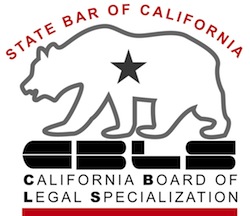We’ve been looking for ways to protect our possessions since the beginning of time.
The tools change, but the goal is the same: defend what’s ours against others.
Today, the whole asset protection industry is built on keeping your wealth and stiffing your creditors. The gurus of asset protection, at least, get rich with elaborate schemes; I’m not sure about their clients.
For most of us, it can be simpler than interlocking partnerships and off shore accounts. We have neither millions to protect nor lifestyles that expose us to huge risks.
Yet if you drive a car, own a business, or have visions of a start up, what you own may be on the line if something financial goes wrong.
So, here are five tactics from the cheapskate’s guide to asset protection, low cost and well within the law, for average folks.
1. Save smartly for retirement
Built in to every tax advantaged retirement product is protection against creditors. Federal law found in ERISA requires that qualifying plan have an anti alienation clause that keeps creditors from levying on your retirement account.
So, protection against creditors is baked in to traditional pension plans; government retirement plans; 401(k)s, 403(b)s; and their kind.
IRA’s aren’t protected by federal law, only by state exemption law. In California, individual retirement arrangements are only protected to the extent necessary for your support in old age. There is an exception for amounts rolled over from an ERISA qualified retirement account. Those funds retain their protection from creditors.
Just saving money or investing on your own, with a mental label that the account is earmarked for retirement doesn’t cut it if a creditor gets a judgment against you.
What does it mean to have a judgment against you
If you are self employed, explore your pension options. You may be able to deduct the cost of contributing from your business profits, to your double advantage.
So, the first step in cheapskate asset protection is to maximize your retirement savings in recognized retirement vehicles.
2. Carry insurance
The most common threat to the worldly accumulations of the average person is the auto accident. Cause serious injury with your car, or even be injured yourself by an uninsured driver, and the bills can be huge.
For this, we have insurance.
Insurance creates a fund from which those claims can be paid, without resort to the value in your home or your investment account.
Some of the saddest stories I’ve encountered as a bankruptcy attorney have been the little old ladies with paid for homes driving (and crashing) with only minimal liability insurance.
3. Incorporate
A basic principle of the high priced asset protection schemes that you can adapt at minimal cost is incorporation.
A corporation is a separate “person” in law. The corporation is not necessarily liable for the debts of its stockholders.
And vice versa: you as the stockholder aren’t automatically liable for the debts of the corporation.
Incorporation as protection for the business
So, a separate entity can confine, or at least limit, risk of failure or liability to that entity.
4. Don’t guarantee debts
It’s hard enough limiting your exposure to your own creditors. If you want to up your game in the asset protection world, don’t make yourself liable for the debts of others.
Usually it’s family that sparks the desire to guarantee a debt or co sign a loan. It seems harmless to lend your credit to someone you’re close to.
But remember, the lender wants a guarantee so you can be made to pay if the primary borrower doesn’t pay.
And if you guarantee a debt, you are just as liable as the borrower himself. In the law of guarantees, there is usually no “primary borrower”; both of you are on the hook.
In my view, student loans are the greatest, everyday threat to the well being of the middle class. We all want an education for our kids or grandkids, but at what cost?
Protect your assets, and say no to guarantees.
5. Avoid community property
While the details vary from state to state, community property is usually liable for the debts of either spouse incurred during marriage. In California, the community property is also liable for the debts that the spouses bring to the marriage.
So a creditor of one spouse can reach both halves of the community property. The actions of either spouse, deliberate or not, expose all the assets acquired during marriage.
Basics of California community property
Agree not to have community property, through a prenuptial agreement, or even a post nuptial agreement, and the creditor of one spouse can only reach that spouse’s property.
Likewise, hold any inheritances that either spouse receives separate from the property of the marriage. That confines the exposure of that asset to the debts of the one lucky enough to inherit.
Check state law for the requirements for an enforceable agreement between spouses. If it’s worth doing, it’s worth doing right.
There you have it: five cheap ways to protect what you have from those who’d take it from you.






